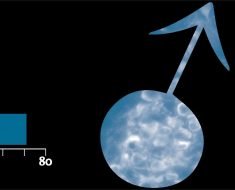Human steps are associated with neural activity that alternates between the left and right sides of the brain, finds a study of Parkinson’s disease patients published in JNeurosci. The research recommends future investigations address whether alternating deep brain stimulation accordingly may improve gait in movement disorders.
Walking problems reduce quality of life for people with Parkinson’s disease. Medication or continuous deep brain stimulation are used to alleviate these symptoms, but some patients do not respond to these treatments.
To better understand how brain activity changes throughout the stepping cycle, Petra Fischer, Huiling Tan and colleagues studied Parkinson’s patients who have received deep brain stimulation surgery. This enabled the researchers to record brain activity from electrodes implanted in the subthalamic nucleus (STN) while participants stepped in place along with a cartoon man in a video.
The researchers found that activity in the 20-30 Hz (beta) range alternated between the left and right STN when the opposite foot touched the ground and the other foot was to be raised.
Source: Read Full Article




